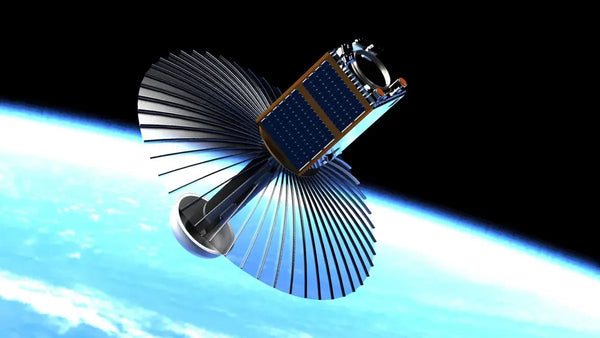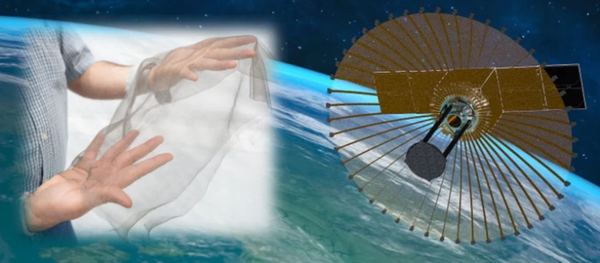CarbSar, An Knitted Satellite Planned to Launch In 2024

According to a BBC report, a group of scientists in the United Kingdom is in the process of developing a unique satellite, named CarbSAR, which is set to launch within the next year. Surrey Satellite Technology Limited and Oxford Space Systems are the two UK-based companies working on the project. The CarbSar satellite is designed to study the Earth using knitted satellites that have never been launched before.
CarbSar in orbit will open like an umbrella
The satellite incorporates an innovative deployable X-band Synthetic Aperture Radar (SAR) payload that provides high-resolution imaging capabilities even in adverse weather conditions and during the night. The SAR technology allows the satellite to see through clouds and observe Earth around the clock. The satellite is equipped with an antenna that can easily withstand the harsh space environment and protect against solar radiation.
The knitted radar antenna is made with tungsten wire mesh and is foldable for launch. Once in orbit, it can expand to form a large umbrella-like shape. When fully opened, it takes a parabolic shape that reflects high-frequency radio signals. The mesh of the antenna is made of gold-plated titanium yarn connected to a series of carbon-based rods.

The gold wire allows the sending and receiving of radio signals in orbit, while the gold plating makes the antenna more resistant to the harsh space environment. Advanced special knitting machines were used to weave the yarn for the radar antenna, forming a "wrapped rib" design.
Application in Earth observation
This nine-foot-wide (three-meter-wide) antenna can be installed on a 330-pound (150-kg) spacecraft. The satellite's high bandwidth radar instrument allows it to capture sharp optical images of the Earth's surface. Synthetic Aperture Radar (SAR) imagery is suitable for various types of observation, including commercial, civil, and security applications, such as defense and security, maritime, disaster response, environment, and infrastructure. The mission is expected to last for approximately five years.
The company highlighted that "CarbSAR will capture high-resolution SAR imagery during day or night and in all weather conditions, allowing the reliable provision of information for a range of applications." The small satellite operates at a high frequency, provides high-resolution all-weather imaging, and requires a low budget, making it ideal for future space applications. The success of this Earth observation technology during the upcoming launch could pave the way for the launch of larger antennas that can be easily folded and stowed inside rockets.
The satellite will likely be launched on a US-based rocket.
What do you think about this next-generation satellite antenna? Join our community to leave your comment and don't forget to follow ”Heyup Newsroom” to keep you always aware of the latest News and Updates from the technology world of the future.
